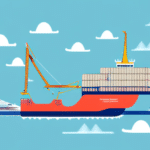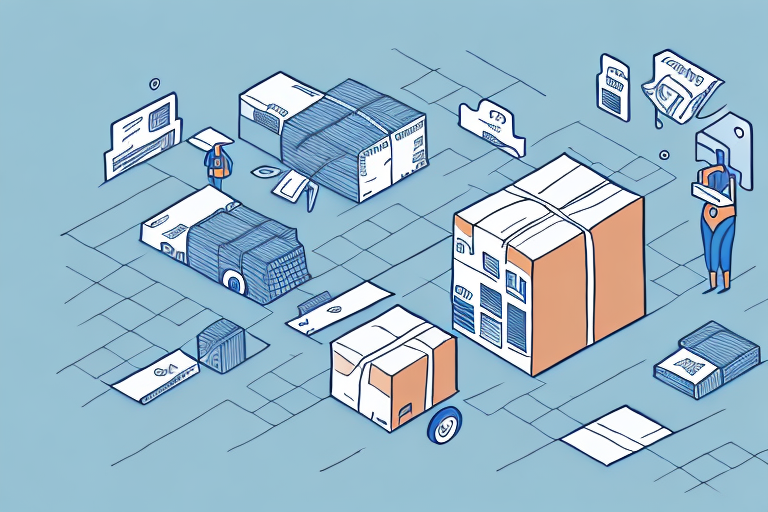Understanding FOB Shipping
Free On Board (FOB) shipping is a pivotal term in international trade, defining the point at which ownership and responsibility of goods transfer from the seller to the buyer. Understanding FOB shipping is essential for business owners to manage their supply chain expenses effectively and avoid unexpected costs.
What is FOB Shipping?
FOB stands for Free On Board, indicating that the seller is responsible for the goods until they are loaded onto the shipping vessel. Once the goods are on board, the responsibility shifts to the buyer, who then handles insurance, freight, and any additional costs.
How Does FOB Shipping Work?
FOB shipping establishes clear terms for the transfer of goods. According to the Incoterms 2020 defined by the International Chamber of Commerce, FOB can apply to any mode of transport, not just sea freight. The buyer assumes all risks and costs once the goods are on board, allowing for greater control over the shipment process.
The Advantages and Disadvantages of FOB Shipping
FOB shipping offers several benefits and drawbacks depending on your business needs.
Advantages
- Provides clear terms for the transfer of goods, reducing the likelihood of disputes.
- Allows buyers to choose their preferred shipping methods and carriers, potentially lowering costs.
- Enhances control over the logistics process once the goods are shipped.
Disadvantages
- Buyers are responsible for additional costs such as marine insurance and customs duties after goods are on board.
- Potential liability for damages that occur during loading.
- Requires buyers to manage more aspects of the shipping process, which can be complex.
Cost Factors and Calculation of FOB Shipping
Accurately calculating FOB shipping costs is crucial for budgeting and financial planning. Several factors influence these costs.
Key Factors Affecting Cost
- Weight and Volume: Larger and heavier shipments incur higher transportation costs.
- Distance: Longer distances increase freight charges.
- Mode of Transportation: Sea freight is generally more cost-effective for large shipments compared to air freight.
- Type of Goods: Hazardous or perishable goods may require special handling, increasing costs.
- Packaging Requirements: Proper packaging ensures the safety of goods but can add to expenses.
- Customs Regulations: Different countries have varied customs duties and import taxes.
Top Mistakes to Avoid
- Underestimating Costs: Failing to account for all expenses can lead to budget overruns.
- Ignoring Packaging: Inadequate packaging can result in damage and additional costs.
- Overlooking Insurance: Not securing adequate insurance exposes you to financial risks.
- Neglecting Documentation: Incomplete or incorrect paperwork can cause delays and fines.
- Lack of Communication: Poor communication with suppliers and carriers can lead to misunderstandings.
Strategies for Managing FOB Shipping Costs
Implementing effective strategies can help businesses manage and reduce FOB shipping costs.
Negotiating with Suppliers
- Research market rates to ensure competitive pricing.
- Establish long-term contracts to secure better rates and terms.
- Discuss bulk shipping discounts to lower per-unit costs.
Tips for Reducing Costs
- Consolidate shipments to decrease overall volume and weight.
- Select the most cost-effective shipping method based on your specific needs.
- Optimize packaging to reduce size and protect goods efficiently.
- Explore alternative transportation options like intermodal shipping.
Best Practices for Managing Expenses
- Maintain detailed records of all shipping transactions.
- Use transportation management systems (TMS) for real-time expense tracking.
- Regularly review and adjust budgets based on actual costs.
- Stay informed about changes in customs regulations and international trade policies.
Comparing FOB Shipping with Other Terms
Choosing the right shipping term is essential for cost management and risk mitigation. Here's how FOB compares to other common terms:
- CIF (Cost, Insurance, and Freight): Seller covers costs, insurance, and freight up to the destination port.
- EXW (Ex Works): Seller makes goods available at their premises, and the buyer handles all subsequent costs and risks.
- DDP (Delivered Duty Paid): Seller is responsible for delivering goods to the buyer's location, including all costs and risks.
Each term has its own advantages and is suitable for different business scenarios. Understanding these differences helps in selecting the most appropriate term for your operations.
Case Studies: Optimizing FOB Shipping Costs
Real-life examples illustrate how businesses can optimize their FOB shipping costs.
- Company A: Streamlined packaging processes reduced damage rates by 20%, resulting in substantial cost savings.
- Company B: Negotiated a long-term partnership with a shipping provider, securing a 15% discount on freight costs.
- Company C: Implemented a transportation management system that enhanced visibility and reduced shipping delays by 25%.
Conclusion
Accurately calculating and managing FOB shipping costs is vital for maintaining a profitable supply chain. By understanding the intricacies of FOB shipping, leveraging strategic negotiations, and implementing best practices, businesses can optimize their shipping expenses and enhance overall operational efficiency. Staying informed about market trends and continuously refining your shipping strategy will contribute to sustained profitability and competitiveness in the global market.






















